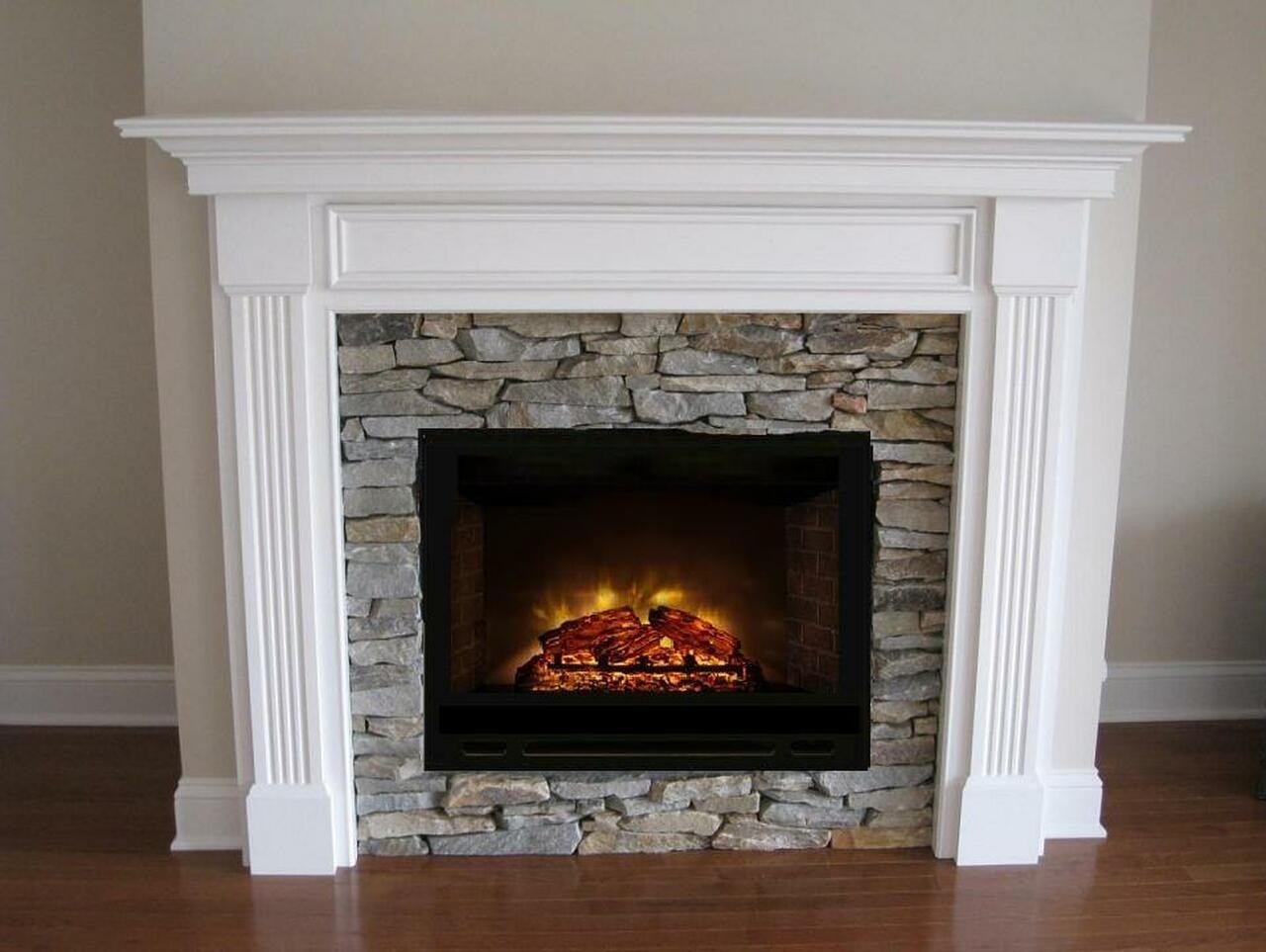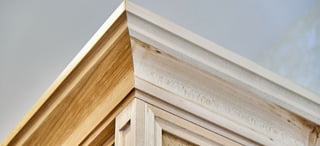Planning and Designing Your Wooden Fireplace Surround
Building a wooden fireplace surround begins with careful planning and design. The surround serves as the architectural frame around your fireplace, and it’s essential to ensure that it complements the style of your home while adhering to safety guidelines. Start by measuring the dimensions of your fireplace to determine the size of the surround. Consider the overall design you want to achieve—whether you prefer a classic mantel with fluted columns and crown molding, a rustic design with distressed wood, or a sleek, modern look with clean lines and minimal ornamentation. Sketch out your design, paying attention to the proportions, and decide on the type of wood you’ll use. Hardwood such as oak, maple, or cherry is often preferred for its durability and finish quality, but softwoods like pine can also be used if you plan to paint the surround. Make sure your design allows for proper clearance from the fireplace opening to meet fire safety codes, typically requiring at least 6 inches from the firebox to any combustible materials.

Gathering Materials and Preparing the Work Area
Once your design is finalized, it’s time to gather the necessary materials and prepare your work area. You’ll need wood for the surround, such as 1×6 and 1×4 boards for the frame and mantel, plywood for backing, and trim pieces for detailing. Additional materials include wood glue, screws, nails, wood filler, sandpaper, and paint or stain. Depending on your design, you may also need decorative moldings or corbels. Gather your tools, including a miter saw for cutting precise angles, a jigsaw for any curved cuts, a drill, a level, clamps, and a measuring tape. Prepare your work area by ensuring you have enough space to lay out the wood pieces and assemble the surround. It’s advisable to work in a well-ventilated area, especially when cutting wood or applying finishes. Before you begin cutting, double-check all measurements and mark them clearly on the wood to avoid any mistakes during the construction process.

Building and Assembling the Surround
With your materials ready, you can start building the wooden fireplace surround. Begin by constructing the framework that will form the basic structure of the surround. Cut your wood pieces to the desired lengths for the legs and the header, which will sit horizontally across the top of the fireplace. Assemble the legs and header using wood glue and screws, ensuring that all joints are square and secure. Attach the plywood backing to this frame, which will provide additional stability and a surface to attach the trim and molding. Once the basic structure is complete, add any decorative elements such as crown molding, trim, or corbels, depending on your design. These details can be cut to size using a miter saw and attached with nails or wood glue. If your design includes a mantel, now is the time to install it, making sure it is level and securely attached to the framework. Sand all surfaces smooth, filling any gaps or nail holes with wood filler. After everything is assembled and sanded, apply your chosen finish—whether it’s a stain that highlights the wood grain or a paint that matches your room’s color scheme.

Installing the Wooden Surround and Final Touches
The final step in building a wooden fireplace surround is the installation and finishing touches. Carefully position the surround around the fireplace, ensuring it fits snugly against the wall. Use a level to make sure the surround is properly aligned and adjust as necessary. Once it’s in place, secure the surround to the wall using screws or nails, making sure to anchor it into wall studs for added stability. Conceal any visible fasteners with wood filler and touch up the finish as needed. If your surround design includes any additional features, such as a shelf above the mantel or integrated lighting, now is the time to install them. Finally, stand back and inspect your work, ensuring that all joints are tight, the finish is smooth, and the surround is securely mounted. The result is a beautiful, custom-made wooden fireplace surround that not only enhances the aesthetic of your living space but also serves as a functional and stylish frame for your fireplace. This DIY project adds a personal touch to your home, showcasing your craftsmanship and attention to detail.

How To Build A Fireplace Frame

9+ Best Barn Wood Wall Fireplace Collection Fireplace feature wall, Living room tv wall, Wood

Buy Online: The Small Georgian Pine Wood Fireplace Surround Wood fireplace surrounds, Wood

Diy Wood Fireplace Mantel Surround – Build A Mantel Over A Brick Fireplace Youtube – Fireplace

How To Build A Fireplace Surround in 2020 Build a fireplace, Fireplace surrounds, Fireplace

Electric Fireplace Mantels Surrounds – Ideas on Foter

Fireplace Surround Plans – Woodworking Plans and Projects WoodArchivist.com Woodworking shop

How To Build A Stacked Stone Fireplace Surround – Fireplace Guide by Linda

Electric Fireplace With Mantel Surround – Foter

How to Build Wooden Fireplace Surrounds DoItYourself.com

Related Posts:
- Fireplace Hearth Surround
- Craftsman Style Fireplace Surround Ideas
- New Fireplace Surround
- Pebble Stone Fireplace Surround
- Laminate Fireplace Surround
- Georgian Fireplace Surround
- Farmhouse Fireplace Surround
- Shaker Style Fireplace Surround
- Victorian Fireplace Surrounds Reclaimed
- Parts of Fireplace Surround
When it comes to home decor, a fireplace can serve as the focal point of a room. Building a wooden fireplace surround can enhance the overall look and feel of your living space while adding a touch of warmth and sophistication. Whether you are looking to update an existing fireplace or install a new one, building your wooden fireplace surround can be a rewarding project that adds value to your home.
Choose the Right Materials
The first step in building a wooden fireplace surround is selecting the right materials for the job. When choosing wood for your fireplace surround, it is important to select a type of wood that is both aesthetically pleasing and durable. Popular choices for fireplace surrounds include oak, cedar, pine, and maple. Each type of wood offers its unique characteristics, so be sure to choose a wood that fits the overall style of your home.
Measure and Plan
Before you begin building your wooden fireplace surround, it is crucial to measure the dimensions of your fireplace to ensure a proper fit. Take accurate measurements of the height, width, and depth of your fireplace opening as well as any surrounding walls or mantels. Once you have measured the dimensions of your fireplace, create a plan for your wooden surround design. Consider factors such as the style, size, and finish of your surround to achieve the desired look for your space.
Cut and Assemble
After selecting the materials and creating a plan for your wooden fireplace surround, it is time to cut and assemble the pieces. Use a saw to cut the wood according to your measurements, making sure to create precise cuts for a seamless fit. Assemble the pieces of wood using wood glue, nails, or screws to secure them together. Be sure to follow any guidelines or instructions provided with your chosen wood and tools to ensure proper assembly.
Finish and Install
Once you have cut and assembled the pieces of your wooden fireplace surround, it is time to finish and install it around your fireplace. Sand down any rough edges or surfaces for a smooth finish, and apply a stain or paint to match the desired look of your space. When installing the surround around your fireplace, use screws or brackets to secure it in place while ensuring proper ventilation around the firebox. Take care to follow safety precautions when installing your wooden fireplace surround to prevent any fire hazards.
Common Mistakes to Avoid:
1. Not measuring accurately: One common mistake when building a wooden fireplace surround is not measuring accurately before cutting materials. This can result in pieces that do not fit properly around the fireplace opening.
2. Choosing the wrong type of wood: Another mistake is selecting the wrong type of wood for your fireplace surround. It is important to choose a durable wood that can withstand heat and provide an attractive finish.
3. Skipping proper finishing: Neglecting to properly finish the wood before installation can lead to an unfinished or unpolished look for your fireplace surround.
4. Not allowing for proper ventilation: Failing to leave enough space for ventilation around the firebox when installing the surround can pose a fire hazard.
Can I build a wooden fireplace surround myself?
Yes, with the right materials, tools, and knowledge, building a wooden fireplace surround can be done as a DIY project.
How long does it take to build a wooden fireplace surround?
The time it takes to build a wooden fireplace surround will vary depending on factors such as complexity of design and size of the project.
Do I need any special tools to build a wooden fireplace surround?
Basic tools such as saws, drills, sanders, and measuring tape will be needed for building a wooden fireplace surround.
Can I customize my wooden fireplace surround design?
Yes, you can customize your wooden fireplace surround design by choosing different types of wood, finishes, and styles that suit your personal taste.
Is it important to follow safety guidelines when building a wooden fireplace surround?
Yes, it is crucial to follow safety guidelines when building and installing a wooden fireplace surround to prevent any accidents or fire hazards in your home.
Building a wooden fireplace surround can be a fun and rewarding DIY project that adds a touch of style and elegance to your living space. By selecting the right materials, measuring accurately, cutting and assembling with precision, finishing properly, and following safety guidelines, you can create a beautiful and functional fireplace surround that enhances the overall look of your home. Remember to take your time and enjoy the process of creating a custom piece that reflects your style and adds value to your home.
Building a wooden fireplace surround can be a great way to enhance the aesthetic appeal of your living space while also providing warmth and sophistication. By following the steps outlined above and avoiding common mistakes, you can create a beautiful and functional fireplace surround that adds value to your home. Remember to measure accurately, choose the right materials, cut and assemble with precision, finish properly, and follow safety guidelines throughout the process. With some time and effort, you can create a custom piece that reflects your style and enhances the overall look of your home.